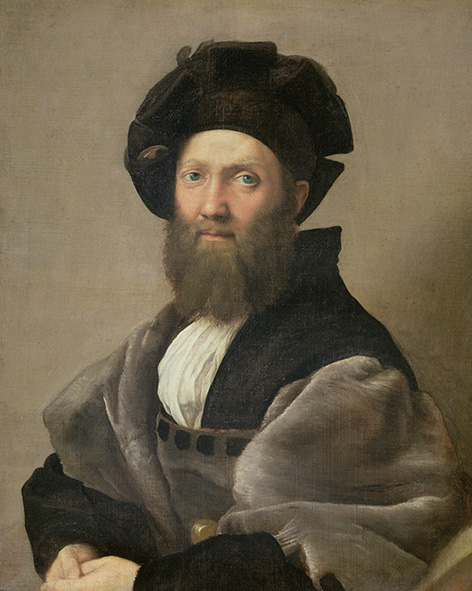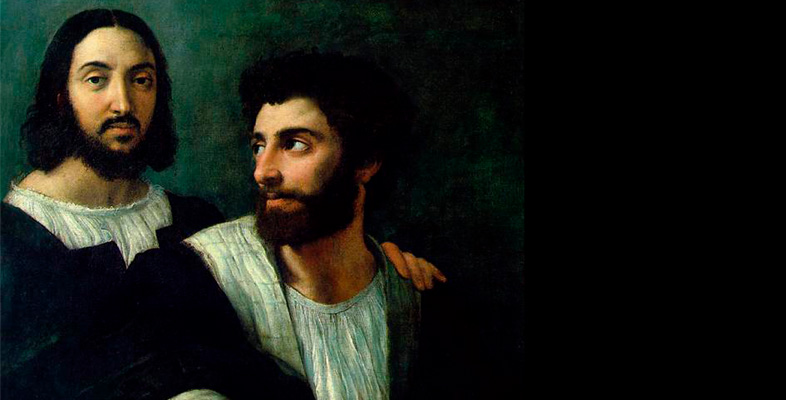2.10.1 Raphael paints Castiglione
In the next two exercises we will consider Raphael’s painted image of Castiglione and Castiglione’s written image of Raphael to see how the two created each other’s identities.
Activity 4
Consider Raphael’s portrait of Baldassare Castiglione in the Louvre (Figure 8), asking what it reveals about the sitter and artist.
- How is the portrait composed?
- How would you describe the relationship between sitter, artist and spectator that it sets up?

Discussion
This portrait is widely celebrated as one of the most innovative and successful in early modern art, not least because of the sense of immediacy and intimacy it conveys. Raphael depicts the sitter in a dignified, monochrome palette. He has worked in relatively loose brushstrokes, allowing the weave of the canvas support to show through.
Castiglione occupies the full surface of the picture, composed geometrically as a triangle locked inside a rectangle. His arresting gaze is the portrait’s most striking feature, as the sitter’s cold blue eyes address the spectator. Implicitly, since this would have hung in Castiglione’s home, this ideal spectator would be a member of his immediate family or an invited friend. Yet the person whom the sitter addresses is also the artist who stood in front of him to paint the portrait, since this image preserves something of the moment of its creation and of the personal relationship between the two men. Raphael and Castiglione regard each other inside this image. The wealthy nobleman dressed in a fashionable fur-trimmed doublet exudes inner calm and aristocratic ease, while the artist is also ‘represented’ in the portrait as a vehicle for the sitter’s impossibly elegant persona. One might even imagine that the surface of the painting is a mirror in which artist and patron reflect one other.
